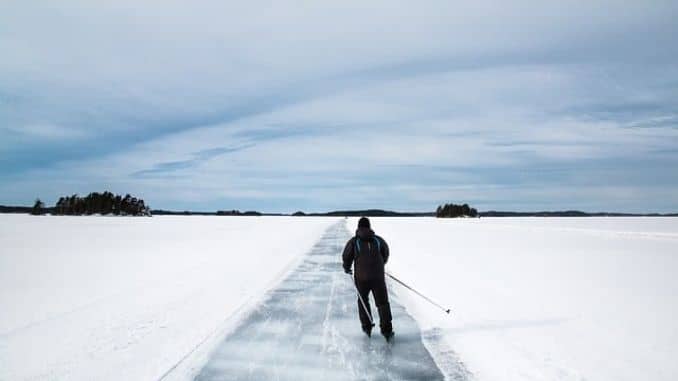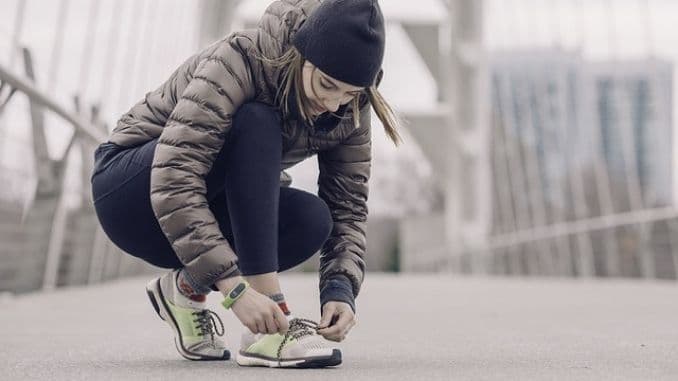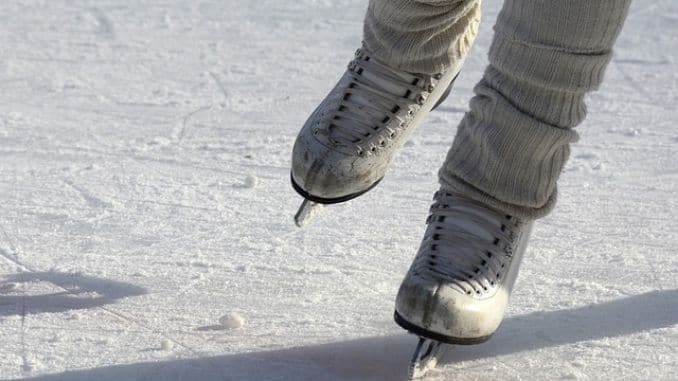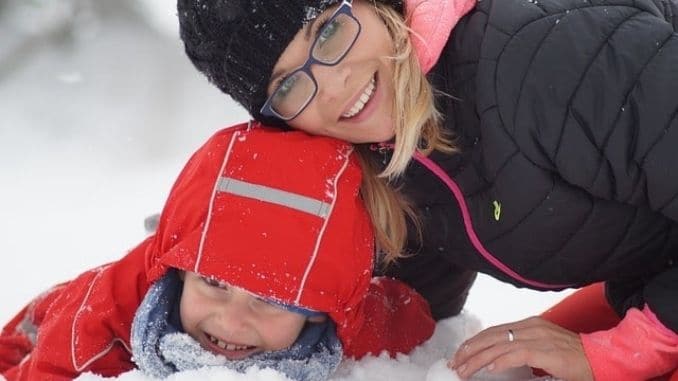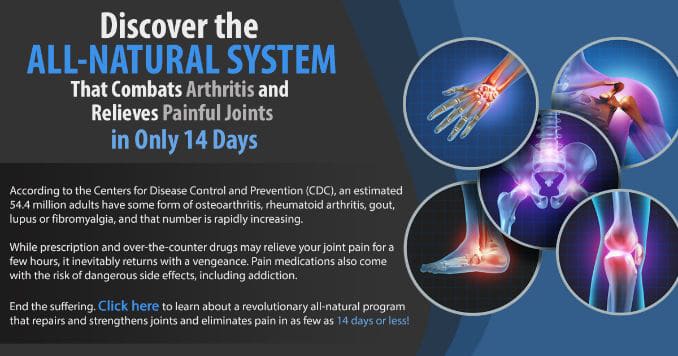
If you’re experiencing a little more muscle and joint pain now that winter is gaining ground, don’t worry — it’s not all in your head. Colder temperatures and other weather changes that typically occur in the late fall and winter months have a direct effect on the body that can lead to stiffness, pain and more difficulty moving, particularly if you suffer from arthritis.
Unfortunately, these effects can discourage you from exercising, which can eventually make the joint pain even worse. To stay fit and energized even when it’s snowing outside, find out more below about exactly what the cold is doing to you and how you can fight back.
Does Cold Weather Exacerbate Joint Pain?
How to Prevent Cold Weather from Aggravating Muscles and Joints: Scientists have long dismissed the notion that joint pain gets worse in the winter, but it happens to so many people that it’s difficult to ignore.
In a 2014 study, researchers questioned people with osteoarthritis in six different European countries with different climates. Results showed that the majority of the participants — 67.2 percent — did feel like the weather affected their pain. Researchers from the Department of Internal Medicine at the Reading Health System in Massachusetts also found that the highest rates of hospitalizations for arthritis occurred in the fall while springtime was linked to the lowest rates.
In an earlier study, nearly three-quarters of rheumatoid arthritis patients reported experiencing more pain with weather changes, particularly when the temperature dropped. In a 2016 study, researchers acknowledged that “pain and stiffness in patients known to have arthritis get worse in cold and damp weather conditions.” They went on to review the published literature on the topic and concluded that colder temperatures seemed to increase joint stiffness, particularly in older people.
Still, researchers said the link was “weak,” and other studies have not found the same results. In an Australian study on people with knee osteoarthritis, there was no link between weather changes and exacerbation of pain. A second Australian study on people with lower back pain showed similar results — no link between weather and the onset of pain.
In one 2009 review, researchers again found no link between the two and theorized that perhaps patients thought their pain was worse on rainy, bad-weather days because the weather put them in a sour mood, to begin with. However, other scientists have come up with a different explanation: it could be the barometric pressure.
Barometric Pressure May Have More Impact on Joint Pain
How to Prevent Cold Weather from Aggravating Muscles and Joints: Scientists from New York examined data from patients who were recovering from fractures. They gathered weather information and examined pain and joint function from more than 2,300 outpatient doctor visits.
Results showed that a low barometric pressure, which typically occurs when the weather is unsettled, was associated with increased pain across all patient visits. High humidity was also associated with increased pain. The researchers concluded, “Patient complaints of weather influencing pain after orthopedic trauma are valid,” adding that “barometric pressure, temperature and humidity impact patient pain levels.”
Earlier studies showed similar results — barometric pressure changes seem to be connected to joint pain. Why would this be? Scientists aren’t sure, but one of their theories is that as air pressure drops, air molecules and gases expand. It could be that the pressure drop causes gases and fluids within the joint capsule to expand as well, putting pressure on nerves, which could result in pain. Tissues may also expand and contract in different ways, leading to stiffness and pain.
Do Muscles Hurt More in Cold Weather?
When muscles are cold, they contract more than they do in the warm weather, tightening even when you’re not working them out. That not only can cause muscle pain but can also cause joint pain because the muscles pull on the joints.
How to Prevent Cold Weather from Aggravating Muscles and Joints: Researchers have found that the effects of temperature on muscle condition and performance go even further than that. Temperature influences muscle power, reducing the rate at which energy is produced at the cellular level. In one study, scientists stated that “maximal aerobic power and the maximal instantaneous anaerobic power decrease with decreasing muscle temperature… .”
When you exercise in cold weather, your muscles have to work harder than they would in warmer weather to complete the same tasks. This can cause increased damage to the muscle fibers and tissues, which may result in more soreness.
Changes in barometric pressure can also affect your muscles. It can cause the muscles to contract, potentially resulting in pain and stiffness. That, plus the cold air-contracting effect is why it’s more difficult to get up and move on cold, winter days, and why it seems to take longer to get your muscles to warm up and become more flexible.
The effects of the cold on muscles are so profound that they can increase the risk of injury.
Cold Weather Increases Risk of Muscle Injury
When you exercise in the cold weather, if you don’t take the right precautions, you could be at an increased risk of muscle strains or tears. Because the cold causes muscles to tighten up more than usual, muscles are stiffer and more vulnerable to injury.
You can imagine the muscle fibers like strips of clay. When that clay is warm, it’s soft and pliable, and you can roll it and move it easily. When it’s cold, though, it’s more likely to tear apart when you work with it. A muscle responds in a similar way.
How to Prevent Cold Weather from Aggravating Muscles and Joints: Scientists experimented on animal muscles in a 2016 study, exposing them to increasing impact energy in a mechanical test while changing the temperature in 5-degree Celsius increments. They found that the energy to induce muscle failure was significantly lower at lower muscle temperatures compared to higher temperatures. The researchers concluded that when temperatures drop, “less energy is required to cause muscle tears.”
In another study, researchers found that heat was beneficial in increasing muscle and ligament flexibility and could help reduce athletic injuries, but cold could have the opposite effect.
The cold can also affect the nerves too, which can make you more likely to hurt yourself. Your feet could feel a little numb, for example, which could cause you to trip or fall. A pain message about something going wrong in your muscle could also be slow getting to your brain, so you might continue to push that muscle without realizing the problem, leading to injury.
How to Reduce Cold Weather Muscle and Joint Pain
Now that you know there are real, measurable changes occurring in the cold weather that affect your muscle and joint pain, what can you do to prevent and/or ease that pain? We’ve got some tips for you below:
- Warm up: This is always an important step, but it’s critical in the cold weather. If you jump right into a powerful movement like sprinting or jumping, and your muscles are stiff from the cold, you could be risking injury. Be patient, and give yourself 10 minutes to gradually bring your heart rate up. Try brisk walking or other light cardio exercises.
- Stretch: Some people warm up without actually stretching their muscles, but this is a bad idea in the cold weather. Your muscles are extra tight, so stretching them once you get your heart rate up and you’re feeling warmer can help make your exercise routine easier and will lessen your chances of injuring your muscles and joints. Focus mostly on the muscles that tend to be tightest: the hamstrings, quadriceps, chest, and shoulders.
- Dress appropriately: Your best approach in cold weather is to dress in layers. That way, you can shed an item or two as you get warm and put them on again as you’re cooling down. Layers also help trap body heat to keep you warm and comfortable. Thermal items are helpful in the middle of winter. Wear mittens or gloves, and make sure they’re appropriate for the temperatures. If your hands are still cold in the gloves, invest in some warmer ones or try thin thermal layer gloves underneath your regular gloves. Always protect your head with some sort of breathable cap, wear a scarf to protect your neck and consider two layers of socks to keep your feet warm. Make sure your shoes are waterproof if you’re heading out on rainy days.
- Stay hydrated: It’s harder to remember to drink in the cold weather, but if you allow yourself to get even a little dehydrated, you’ll be more sensitive to pain, and your body will have a harder time regulating temperature.
- Cool down: This is another step that’s easy to skip, particularly if you feel rushed for time. However, if you don’t take a moment to stretch your muscles, they’ll be more likely to hurt later on. Your muscles tighten up when you exercise, so take 5 minutes to stretch them out again, reducing tightening and decreasing inflammation. Focus on the same muscles you did in your warm-up, but then be sure to stretch your back, arms, and calves too.
- Take a warm bath or shower: After you exercise, getting into warm water will help relax tense muscles.
- Keep your mood up: If you get down or depressed in the lousy weather, that can affect your perception of pain, reducing your tolerance and making it seem more present and persistent. Find fun things to do inside that will keep you feeling happy even when the blizzard is raging.
- Keep moving: You may be tempted to abandon your exercise routine during the colder months, but that would be a mistake. It’s important to your overall health, and it also helps reduce joint pain. If you don’t want to go out there in the cold, choose indoor activities that you’ll enjoy instead.
For your guide to healing your joints, check out the 14-Day Joint Recovery Quick Start Program, here!

